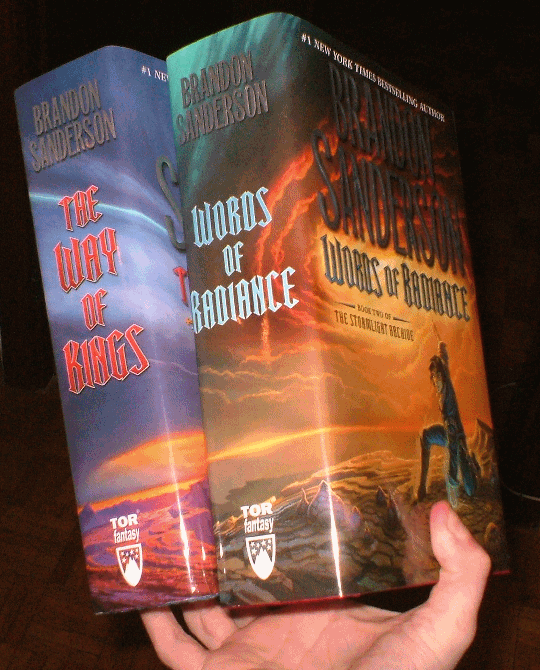Elsewhere I commented the rest of the show saying that after the third episode it normalized itself and became more conservative and harmless. Now that I’ve seen the finale I confirm that view. Narratively the show is extremely conservative and all its stakes are on flawless execution.
But flawless execution it is. Despite the lack of excess of ambition I thought the finale was absolutely excellent and overall the show is the best television I’ve ever seen in such format. So I could accuse it of not pushing enough against the boundaries of convention, but this was only my wish, not the original intention of the show.
I don’t want to write a full review, just pointing out a couple of things. The most important aspect that transcends execution (how it’s written, how it’s acted, how it’s shot) is how the story bounds to its theme and how the mythology is bound to both.
When the King in Yellow was first mentioned we didn’t know anything about what to expect or where the show was going with it. We just thought it was a neat wink to this corner of geek culture. But this blog has a good article on what it means. It explains well what the King in Yellow represented in the life and breadth of work of his author.
What it couldn’t foresee, though, is that that was the key to the show as well. Here’s a good article by proverbial Jeff Jensen (who always enjoys the playful shows, like LOST or Fringe) on the finale and the meaning of it all (his articles are always more interesting for what they suggest than factual interpretations).
What I appreciated is that the King of Yellow isn’t just there to represent an undefined form of threat, that is finally defeated and exorcized/banished, only to reappear at the very last moment as it happens in dreadful horror shows. Because in the horror shows the threat is there, originating where the mythology comes from: some mythical, magic space beyond reality. But in True Detective all this mystical veil is redirected to an actual origin: the human mind. It starts with the human mind, it ends with the human mind. If the King in Yellow, accordingly to that article, was just the sublimation of a certain decadent culture:
This is also the most literal interpretation – The King in Yellow “himself” could also stand for, well, quite a few things. Take, for example, opium. Chambers wrote The King in Yellow following his experiences as an art student in Paris during one of its most decadent eras. Both opium (Thomas de Quincey’s “the dark idol”) and absinthe (“the green muse”) were prevalent – especially amongst the city’s population of Bohemian artists and poets. It isn’t much of a reach to think that “The King in Yellow” – a play that inspires weird genius, but is also addictive, physically debilitating and sanity destroying – is a metaphor…
And maybe even more telling is how Lovecraft criticized Chambers for not sticking to the mythology itself, as a form of purity that doesn’t need to be disguised (or sullied) in worldly matters.
True Detective, then, takes Chamber’s stance. You shouldn’t look at the mythology because it’s just a false idol. True Detective is not a show about the supernatural, and it never gives in to that temptation. Jeff Jensen pulls the curtains nicely:
He was fooling himself. Rust Cohle has always been fooling himself. His cynicism, his callousness were parts of the mask he wore to engage the world, to deal with himself. But it offered no protection when his mind — tweaking from the fetid evil around him — conspired against him and waylaid him with a vision of a coal-black vortex spiraling down to claim him. Maybe you were thinking: They’re going to do it! Cthulhu is coming! Coming to take us away, ha-ha! Ho-ho! Hee-hee! Beam me up, Lovecraft!
But nope.
True Detective was always all about authenticity — or rather, the lack thereof, and the stories we tell ourselves to get us through the day (religion, or nothingness, or our private Carcosa) and in turn imprint (and inflict) upon the world.
Carcosa is then a place of the mind. It’s just environment that contains this specific flavor of human evil. It’s projected and given a name, it’s made ideal and symbolic.
This is also the show’s dualism well represented. The show’s opening with the blending of shapes with landscapes stresses the dualism: we are people, made of solid matter, but we live in thought. Our life is symbolic. The mind is separate from the body, yet the mind is of the body. It’s made of those landscapes, we are part of that, continuous to that.
So Carcosa is our place, the place of the mind, of symbols and myths.
the stories we tell ourselves and in turn imprint (and inflict) upon the world.
We bring Carcosa to the world because Carcosa is our true self. “True” becoming perspective. What’s true, the symbol or the substance? The world as it is, or the world imagined? Matter or thought? Void or form?
As in Bakker’s “the darkness that comes before”, as human beings we enjoy displacing things. We create gods and then place them before us, so the gods can create us. Then we create evil and place it before us, so that we are not responsible.
Hence, the show’s corny final words are coherent with the theme. We decide and make the difference between light and dark. It’s on us. There’s no mythical elsewhere we can blame for our actions (or lack of).
But the ultimate point is also that the darkness is already here, all around us. And there’s no supernatural or fictional elsewhere to banish it to.
(required reading, for the point of view of the writer and context, and brilliant answers about accuses of misogyny)
I think there’s a lot of self-projection going on in certain cases; like the show has become a Rorschach test for a specific contingent of the audience in which they read their own obsessions into it.
I think True Detective is portraying a world where the weak (physically or economically) are lost, ground under by perfidious wheels that lie somewhere behind the visible, wheels powered by greed, perversity, and irrational belief systems, and these lost souls dwell on an exhausted frontier, a fractured coastline beleaguered by industrial pollution and detritus, slowly sinking into the Gulf of Mexico. There’s a sense here that the apocalypse already happened. And in places like this, where there’s little economy and inadequate education, women and children are the first to suffer, by and large.


